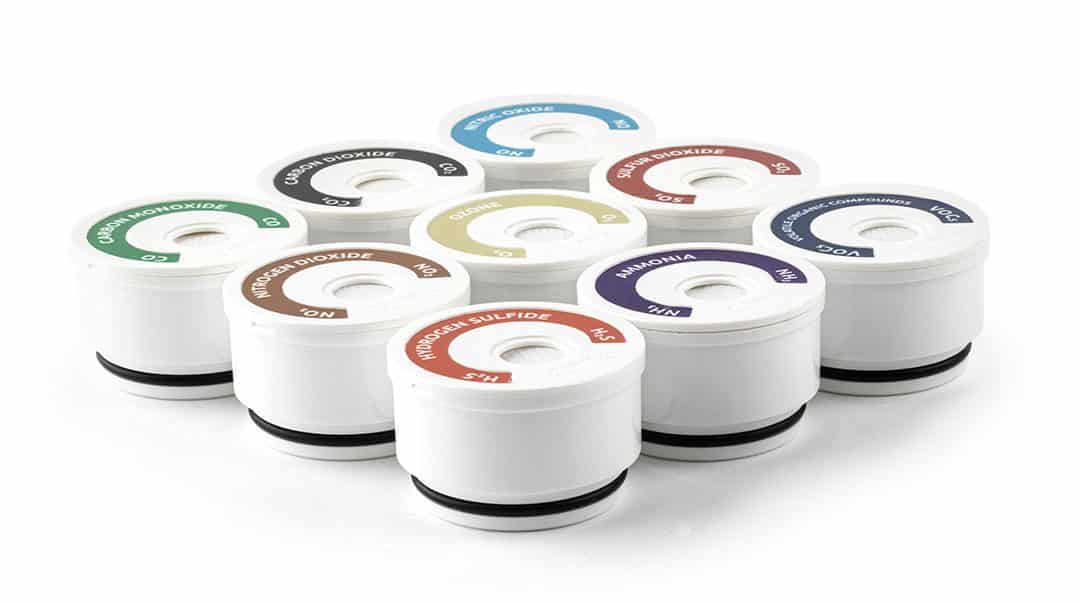
Particulate Matter


Where is it found?
Particles are emitted from a wide range of man-made sources. The most significant are road transport, non-com- bustion processes, industrial combustion plants and processes, commercial and residential combustion and power plants. Natural sources are less important and include volcanoes and dust storms.
Why is it harmful?
Particles may be seen as ones of the most critical of all pollutants. Particulate matter is the generic term to classify air pollutants comprising of suspended particles in the air. The size, surface, number and composition of particles play an important role in human health effects. The upper respiratory tract is affected by PM10 while lung alveoli is affected by ultrafine particles (<0.1 µm diameter).
Particles can cause premature mortality in patients suffering from lung or heart disease, provocate heart attacks, aggravate asthma, reduced lung functionality, irritation in airways, coughing, difficult breathing, etc.
PM sensor
The Particulate Matter sensor consists on an Optical Particle Counter (OPC). To cover different applications, two particle sensors are available:
- Type A (specific for Kunak AIR Pro stations): an OPC capable of measuring particles from 0.3 µm up to 40 µm. Then, the PM1, PM2.5, PM4, PM10, Total Suspended Particles (TSP) and Total Particle Counter (TPC) are calculat- ed assuming a particle density Field co-location studies have shown that the expected field performance is comparable to Palas Fidas 200 equivalent instrument.
- Type B (specific for Kunak AIR Lite stations): sensor with a range of measurement from 0.3 µm up to 10 µm. The sensor monitors accurately PM1 and PM2.5 concentration, while the expected error for PM10 is higher in presence of coarse
The effect of humidity is perfectly corrected with the embedded algorithm achiving high accuracy at any environ- mental conditions except under foggy days or condensation, where the data is automatically invalidated by the software KunakCloud. Further calibrations can be applied at a specific site to match the mass concentrations. Also, the particle size distributions are available on Kunak Cloud.
Technical specifications
Type A
Type | Optical particle counter |
Unit of measurement | µg/m³ |
Measurement range(1) | 0 – 1,000 µg/m³ (PM1) 0 – 1,500 µg/m³ (PM2.5) 0 – 2,000 µg/m³ (PM10) |
Resolution(2) | 1 µg/m³ |
Operating temperature range(3) | -10 to 50 ºC |
Operating RH range(4) | 0 to 99 %RH |
Recommended RH range(4) | 0 to 95 %RH |
Operating life(5) | > 24 months |
Repeteability(8) | 2 µg/m³ (PM1) 3 µg/m³ (PM2.5) 5 µg/m³ (PM10) |
Response time(9) | < 10 sec |
Limit of Detection (LOD)(7) | 0.5 µg/m³ (PM1) 0.5 µg/m³ (PM2.5) 1 µg/m³ (PM10) |
Typical accuracy (MAE)(10) | ± 2 µg/m³ (PM1) ± 3 µg/m³ (PM2.5) ± 4 µg/m³ (PM10) |
Typical precision R² (10) | > 0.9 (PM1) > 0.8 (PM2.5) > 0.7 (PM10) |
Typical slope(10) | 0.85 – 1.18 |
Typical intercept (a)(10) | -1.8 µg/m³ ≤ a ≤ +1.8 µg/m³(PM1) -2 µg/m³ ≤ a ≤ +2 µg/m³ (PM2.5) -3 µg/m³ ≤ a ≤ +3 µg/m³ (PM10) |
DQO – Typical U(exp)(11) | < 50% |
Typical Intra-model variability(12) | < 2 µg/m³ |
Type B
Type | Optical particle counter |
Unit of measurement | µg/m³ |
Measurement range(1) | 0 – 1,000 µg/m³ |
Resolution(2) | 1 µg/m³ |
Operating temperature range(3) | -10 to 60 ºC |
Operating RH range(4) | 0 to 99 %RH |
Operating life(5) | > 24 months |
Response time(9) | < 10 sec |




